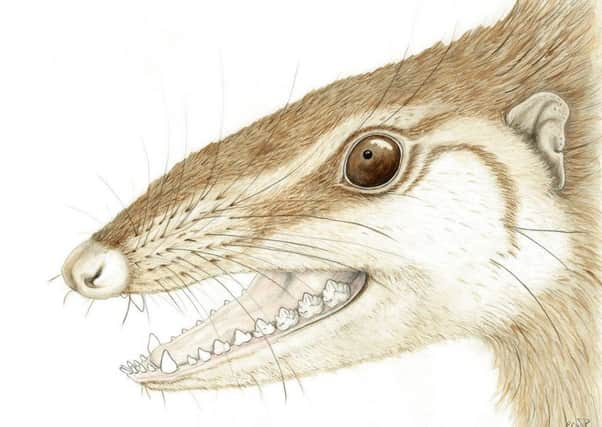Skye fossil shows first evidence of Scottish mammals producing milk


The remains are from an animal that lived on Scotland’s famous ‘Jurassic Island’ more than 165 million years ago, when dinosaurs roamed the earth.
Called Wareolestes rex, the species was previously only known from a few single molar teeth unearthed in England.
Advertisement
Hide AdAdvertisement
Hide AdThe newly discovered fossil is the most complete example of the creature ever found and includes an almost whole jaw with several teeth.
The position of some of the teeth, still inside the jaw and not yet erupted through the gums, is what makes the find so important.
It shows Wareolestes rex replaced its teeth once, like humans and other modern mammals – with milk teeth followed by an adult set.
This pattern of tooth replacement is an important step in the evolution of mammals and is linked to the production of milk to feed young.
However, experts believe it is unlikely the mammal had breast tissue or nipples.
The milk was more likely secreted onto a bare patch of the mother’s skin, to be lapped up by offspring.
This is the same mode of delivery seen in today’s platypus.
Suckling is thought to have evolved much later.
Lead researcher Elsa Panciroli, a PhD student at the University of Edinburgh and National Museums Scotland, said: “This is such an exciting discovery.
Advertisement
Hide AdAdvertisement
Hide Ad“It’s one of the most complete Middle Jurassic mammal fossils described from Scotland.
“This was a juvenile animal that was losing its milk teeth and the permanent teeth were just breaking through the gums.
“Tooth replacement like this tells us this early mammal fed on milk provided by the parent until it grew to adult size.
“Wareolestes would have cared for its young, which is a behaviour we associate with modern mammals.”
Wareolestes rex was fairly large for a mammal in the Middle Jurassic period – around the size of a guinea pig.
Its Scottish home would have been an environment dominated by lagoons and home to turtles, crocodiles, pterosaurs and dinosaurs, when mainland Scotland was an island surrounded by a semi-tropical sea.
The discovery was made during field work by a team from National Museums Scotland, the University of Edinburgh and the University of Oxford in 2015.
Fossils currently being uncovered on Skye are amongst the most complete mammal material found outside of China.
Advertisement
Hide AdAdvertisement
Hide AdDating from the Middle Jurassic, they predate many of the Chinese examples.
Globally, very few fossils exist from the Middle Jurassic, making these Scottish finds of outstanding scientific and international importance.
Colin MacFadyen, from government nature agency Scottish Natural Heritage, said: “This latest discovery is incredibly exciting as it increases our knowledge concerning the evolution of mammals.
“We are incredibly lucky having rare Middle Jurassic rocks in which such fossils are found.
“Once again the geological heritage of Scotland has yielded something very special, of global significance.
“It is exciting to consider that more outstanding fossil material awaits discovery.”